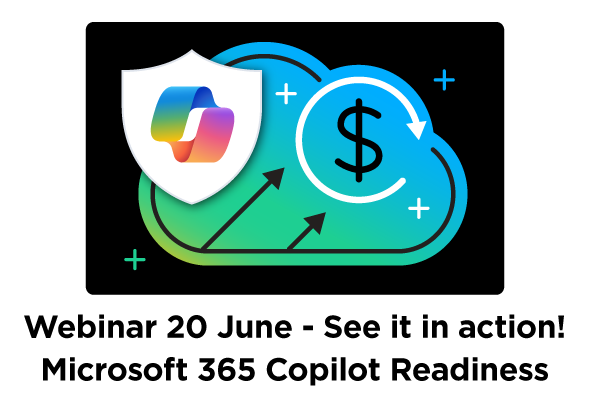Trends, trials, and tribulations of what the post-COVID world has in store for organizations
It is now safe to say that the workplace models we use to know have changed forever. In light of recent medical breakthroughs and the promise of an economic upturn, the opportunities for Managed Service Providers (MSPs) who pivoted to meet their customer’s remote work needs are more prepared for a post-COVID world. The pandemic for all its ravages, has been an inflection point for SMBs as they turned to cloud and SaaS solutions for collaboration, communications, security, and efficiencies – all of which is now a requirement for productivity and profitability as the world continues to transform. In part one of this two part series, we’ll lay the foundation for what a post-COVID world has in store for partners, as remote work continues to become the norm.
The new realities for work and play
The IT infrastructure is adapting rapidly to our new normal. Significant growth in online collaboration tools, such as Microsoft Teams (Daily active users have increased almost 8X from 32 to 250 million, since the onset of the pandemic) are indicators of how cloud-based productivity services are taking off. A recent survey by the Remote Workforce Security Report indicates that almost 40% of organizations are seeing higher productivity rates and other benefits from remote work, which will lay the groundwork for what’s to come later this year.
Remote work isn’t going anywhere, in fact 86% of organizations state they’re considering continued and increased work from home capabilities in the future. In addition to large enterprises, like Facebook and Microsoft, committing to a distributed work model we’re seeing franchised insurance agencies and mom/pop retail shops giving up office space in favor of delivering online services. Without cloud services, companies would struggle to find, let alone communicate with, their off-site workers and engage their customers. The always-on, everywhere promise of the cloud has been a catalyst for customers looking to consume products and services on their terms.
The fitness industry is a microcosm of how resilience and adaptability during world-wide coronavirus lockdowns and continued restrictions have brought innovation and less economic woes to this industry. While true the ongoing pandemic has led to “the toughest time for health clubs in more than 50 years” analysts say, we also see that those health clubs who were able to accelerate their transition to cloud-first offerings and adopt communication and collaboration technologies, like Zoom and Teams, for a home delivery model/experience have not only survived but are well-positioned succeed post-COVID. Fitness customers have come to appreciate the flexibility that comes with cloud innovation; 85% use livestream classes weekly, versus 7% usage rates in 2019. Additionally, many gyms now provide customers with a friendly and more intuitive online experience, which includes managing appointments, scheduling one-on-one sessions, customer billing, and exercise tracking capabilities. Expect health clubs to continue investing in these online options as members increasingly find that their preferred “new normal” is to engage on their own terms.
The perils of a good thing
The new normal has created new risks. With the IT industry caught off guard by the rapid digital transformation needs, across multiple industries and business models, it is not surprising that this seismic shift to cloud has attracted bad actors looking to exploit the situation. As the COVID-19 situation worsened ransomware attacks increased by some 72% over the first half of 2020. The average ransomware payout is $233K per event in Q4, 2020 which has grown from less than $10K in Q3, 2018. And large-scale data breaches are growing in intensity and frequency in 2020 from cyber criminals looking distribute malware and steal login credentials. A massive data breach involving unemployment claims in Washington state, potentially exposed personal data of more than 1.6 million people and ended up paying $600 million to scammers. Global organizations as varied as the INTERPOL and the Center for Strategic and International Studies issued cyber-security alerts to businesses. Digital transformation is indeed giving way to security transformation.
Remote work has exposed security loopholes as organizations no longer have complete visibility into workers who are operating outside of the corporate network. For example, as employees start to mix personal use and corporate use on their work laptops, there has been a 25% increase drive-by-downloads and 15% users are more susceptible to phishing attacks at home . A perfect storm of stretched IT resources and increased cyber threats grew rapidly under ‘stay at home’ orders. Unanticipated increases in operational costs, due to security and data breaches, require MSPs to provide robust solutions to unique challenges at scale. Protection of key productivity data from cyber-attacks is more important than ever before. The need for a solid data recovery and business continuity strategy in the case of a data loss situation has never been greater.
While this ongoing pandemic has certainly highlighted the need for SMBs to adopt better cloud and data recovery plans, the market reality is also clearer – most SMBs have not taken critical next steps to prepare for the likelihood of data loss. For example, a research study by Dimensional Research found that only 15 percent of organizations could recover from data loss within an hour. Other research has shown that despite the forcing function of remote work models, an astonishing 80% of SMBs have yet to complete their move to the cloud – or in some cases adopt cloud services.


